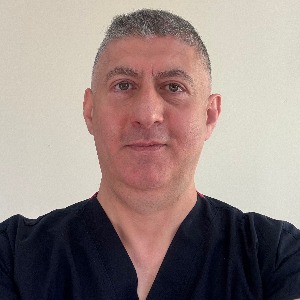Title : Outcomes of Total Knee Arthroplasty (TKA) without rehabilitation using a midvastus approach with complete synovectomy and subperiosteal posteromedial release
Abstract:
Background: Total knee arthroplasty (TKA) aims to restore function and relieve pain while preserving the extensor mechanism. The midvastus approach allows sparing of quadriceps fibers, potentially improving early recovery. In this study, we evaluated the clinical outcomes of TKA performed with a complete subperiosteal synovectomy and posteromedial release extending to the medial collateral ligament insertion, without a formal rehabilitation program. Patients were allowed unrestricted early full range of motion (ROM) and mobilization.
Methods: A total of 69 patients (76 knees, including 7 bilateral TKA cases) with a mean age of 67 years underwent TKA using a midvastus incision. Complete synovectomy and posteromedial release were performed subperiosteally. Postoperatively, immediate full weight-bearing and unrestricted ROM were permitted without supervised physiotherapy. Clinical outcomes included operative time, hospital stay, drainage volume, hemoglobin decrease, transfusion rates, ROM, pain (VAS), and Knee Society Score (KSS). Extensor function was assessed by the ability to perform a straight-leg raise postoperatively.
Results: The mean operative time was 88 minutes, and the average hospital stay was 5.1 days. Postoperative drainage averaged 338 mL, with a mean hemoglobin decrease of 2.3 g/dL; 68% of patients required no transfusion. Maximum knee flexion improved from 90° preoperatively to 105° postoperatively (p<0.001). VAS pain scores decreased from 7.6 to 2.5 (p<0.001). The KSS clinical score improved from 39 to 85 (p<0.001), and the functional score from 29 to 80 (p<0.001). Importantly, no patient experienced extensor lag or early strength loss, and all were able to perform a straight-leg raise on postoperative day one.
Conclusion: The combination of midvastus muscle-sparing incision, subperiosteal total synovectomy, and posteromedial release allows safe early mobilization without supervised rehabilitation, while preserving extensor mechanism integrity. This technique yielded excellent early pain relief, improved ROM, and significant functional gains, supporting its effectiveness in total knee arthroplasty.




